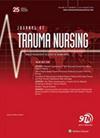Optimizing Trauma Activation Criteria for a Rural Trauma Center.
IF 0.9
4区 医学
Q4 CRITICAL CARE MEDICINE
引用次数: 0
Abstract
BACKGROUND There is a need for activation criteria that reflect the different factors affecting rural trauma patients. OBJECTIVE To develop effective activation criteria for a rural trauma center among adults, incorporating variables specific to the geography, mechanisms of injury, and population served. METHODS This is a single-center, retrospective cohort study conducted from (23 years) January 1, 2000, to July 31, 2023. The data collected patient demographics, injury details, morbidity, and preexisting comorbidity. This research included all adult (≥15 years) true Level I trauma activations defined as an injury severity score > 25 and met the need for trauma intervention criteria. The patients were grouped into adult and elderly categories. The analysis utilized a logistic regression model with the outcome of a true Level I trauma activation. RESULTS A total of 19,480 patients were included in the sample; 2,858 (14.6%) met the Level I activation criteria. Elderly Level I activation included assault, pedestrian struck, multiple pelvic fractures, traumatic pneumo/hemothorax, mediastinal fracture, sternum fracture, and flail rib fracture. CONCLUSION Using the findings of the logistic regression model, this center has made more robust activation guidelines adapted to its rural population.优化农村创伤中心的创伤启动标准。
背景需要制定能反映影响农村创伤患者的不同因素的启动标准。目的为农村创伤中心制定有效的成人启动标准,并纳入地理位置、受伤机制和服务人群的特定变量。方法这是一项单中心回顾性队列研究,研究时间为 2000 年 1 月 1 日至 2023 年 7 月 31 日(23 年)。数据收集了患者的人口统计学特征、受伤详情、发病率和既往合并症。这项研究包括所有成人(≥15 岁)真正的一级创伤激活,即受伤严重程度评分大于 25 分,并符合创伤干预需求标准。患者被分为成人组和老年组。结果共有 19,480 名患者被纳入样本;2,858 人(14.6%)符合 I 级创伤激活标准。老年 I 级启动包括袭击、行人撞击、多发性骨盆骨折、创伤性气胸/血胸、纵隔骨折、胸骨骨折和肋骨骨折。
本文章由计算机程序翻译,如有差异,请以英文原文为准。
求助全文
约1分钟内获得全文
求助全文
来源期刊

Journal of Trauma Nursing
CRITICAL CARE MEDICINENURSING&-NURSING
CiteScore
1.20
自引率
10.00%
发文量
106
期刊介绍:
Journal of Trauma Nursing (JTN) is the official journal of the Society of Trauma Nurses.
The Society of Trauma Nurses believes that trauma is a disease impacting patients through the continuum of care. The mission of STN is to ensure optimal trauma care through education, collaboration, leadership and membership engagement. As the official publication of the Society of Trauma Nurses, the Journal of Trauma Nursing supports the STN’s strategic goals of effective communication, education and patient advocacy with original, peer-reviewed, research and evidence-based articles and information that reflect the highest standard of collaborative care for trauma patients.
The Journal of Trauma Nursing, through a commitment to editorial excellence, implements STN’s vision to improve practice and patient outcomes and to become the premiere global nursing organization across the trauma continuum.
 求助内容:
求助内容: 应助结果提醒方式:
应助结果提醒方式:


